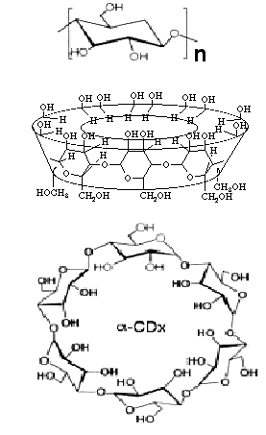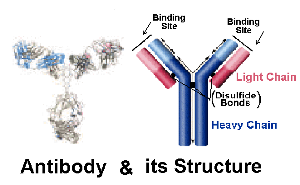Buckyballs
Cyclodextrins, Liposome and Monoclonal Antibody At the same time that chemists, materials scientists and physicists have been experimenting with structures like carbon nanotubes and buckyballs and diamondoids, biologists have been making their own advances with other nanoscale structures like cyclodextrins , liposomes and monoclonal antibodies. These biological nanostructures have many applications including drug delivery and drug targeting. Cyclodextrins, as shown in Figure 3, are cyclic oligosaccharides. Their shape is like a truncated cone and they have a relatively hydrophobic interior. They have the ability to form inclusion complexes with a wide range of substrates in aqueous solutions. This property has led to their application for encapsulation of drugs in drug delivery.

Figure 3. Chemical formula and structure of Cyclodextrins – For n=6 it is called α-CDx, n=7 is called β-CDx, n=8 is called γ-CDx. Cyclodextrins are cyclic oligosaccharides. Their shape is like a truncated cone and they have a relatively hydrophobic interiors. They have the ability to form inclusion complexes with a wide range of substrates in aqueous solution. This property has led to their application for encapsulation of drugs in drug delivery.
Liposome is a spherical synthetic lipid bilayer vesicle, created in the laboratory by dispersion of a phospholipid in aqueous salt solutions. Liposome is quite similar to a micelle with an internal aqueous compartment. Liposomes, which are in nanoscale size range, as shown in Figure 4, self-assemble based on hydrophilic and hydrophobic properties and they encapsulate materials inside. Liposome vesicles can be used as carriers for a great variety of particles, such as small drug molecules, proteins, nucleotides and even plasmids to tissues and into cells. For example, a recent commercially available anticancer drug is a liposome, loaded with doxorubicin, and is approximately 100-nanometer in diameter.

Figure 4. Cross section of a liposome - a synthetic lipid bilayer vesicle that fuses with the outer cell membrane and is used to transport small molecules to tissues and into cells.
A monoclonal antibody protein molecule consists of four protein chains, two heavys and two lights, which are folded to form a Y-shaped structure (see Figure 5). It is about ten nanometers in diameter. This small size is important, for example, to ensure that intravenously administered these particles can penetrate small capillaries and reach cells in tissues where they are needed for treatment. Nanostructures smaller than 20 nm can transit out of blood vessels.
 Figure 5. An antibody is a protein (also called an immunoglobulin) that is manufactured
Figure 5. An antibody is a protein (also called an immunoglobulin) that is manufactured
by lymphocytes (a type of white blood cell) to neutralize an antigen or foreign protein.